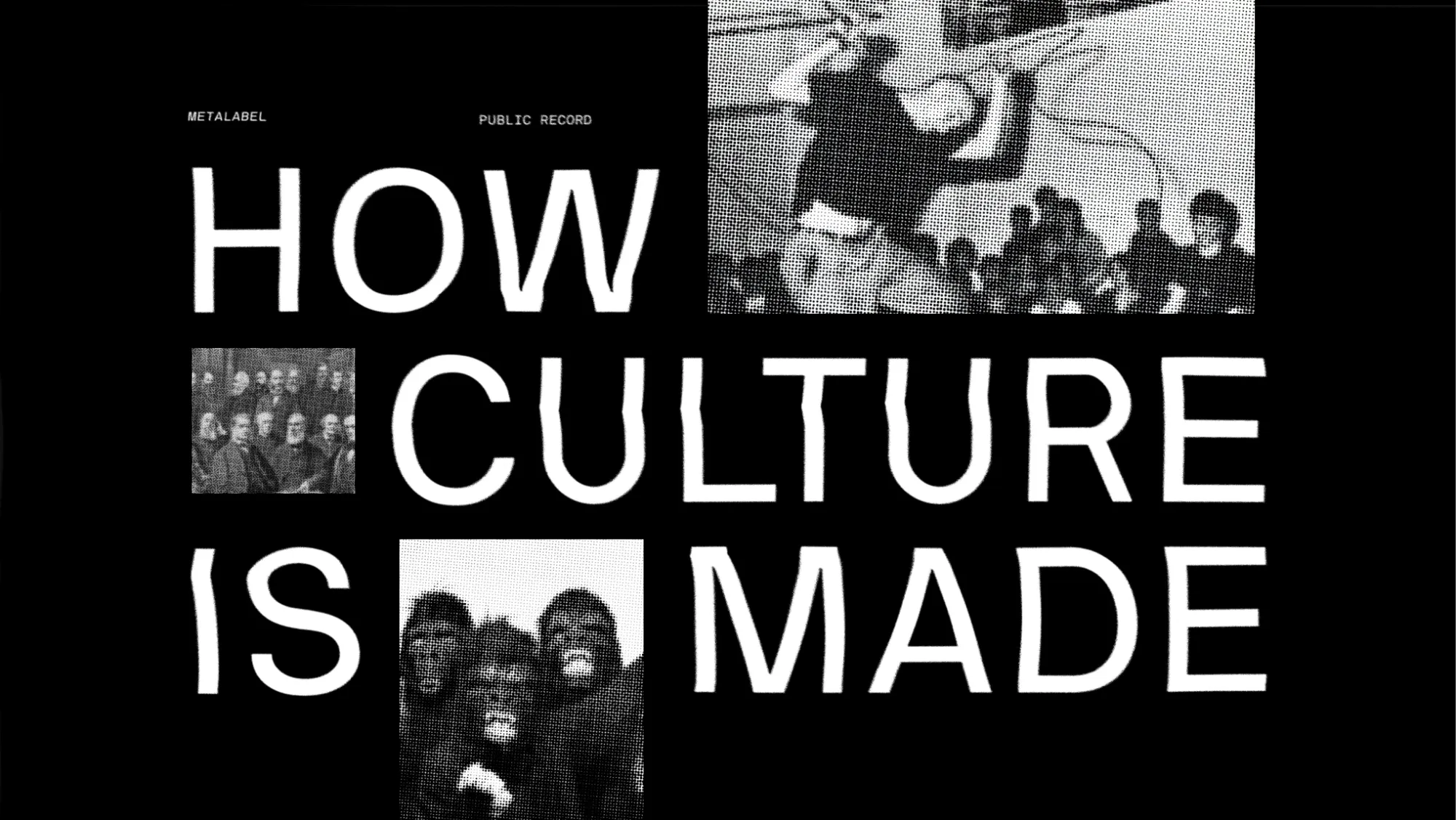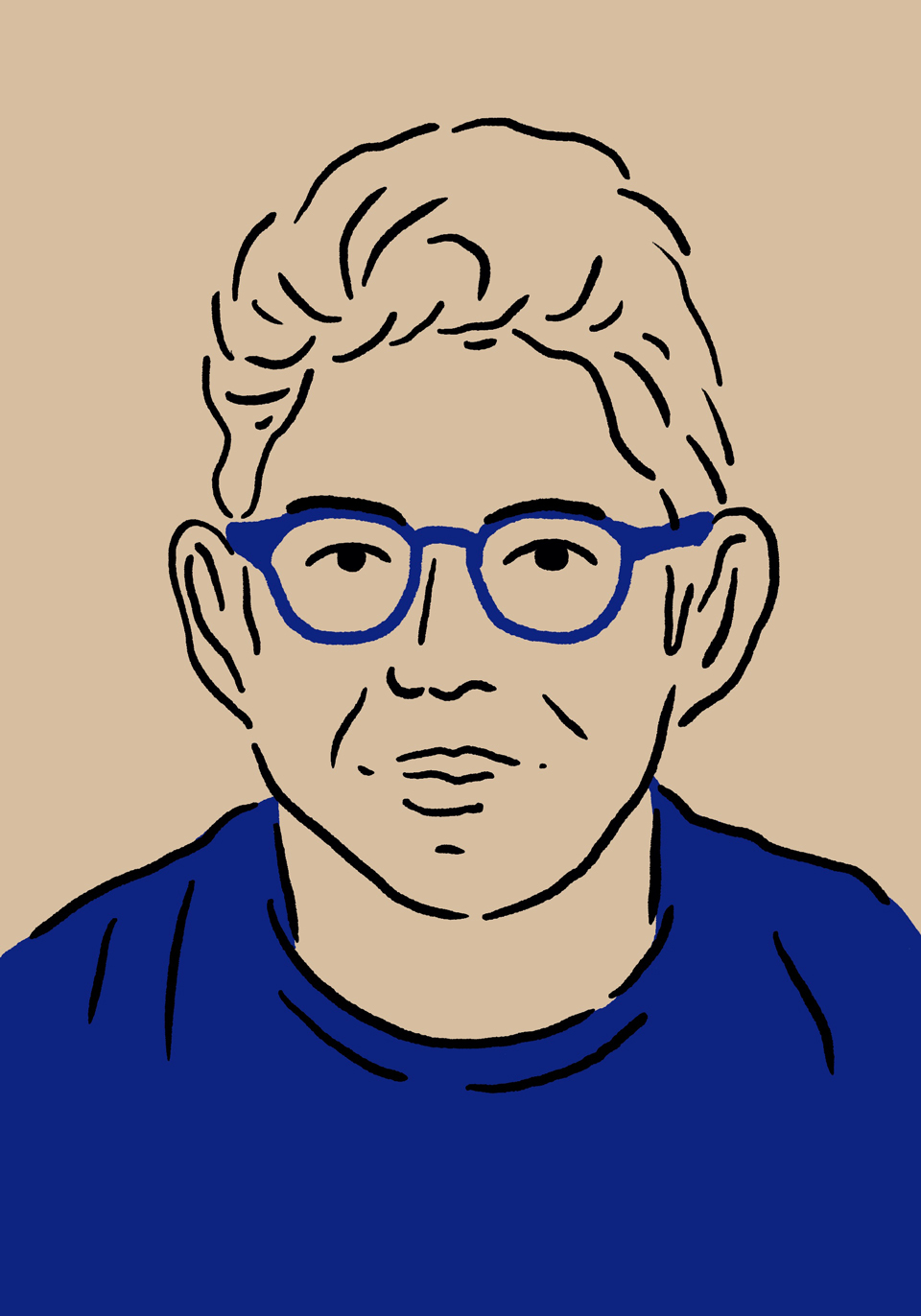How culture is made

Four stories that span centuries, geographies, and worldviews that reveal how to shape culture and the world around us.
Story #1: Take nobody’s word for it
It’s November 28, 1660. Europe is in the early stages of transforming from the Middle Ages into something new. At a small university in London, an astronomy professor holds weekly lectures on “Natural Knowledge,” a Middle Age term describing facts that only God would know — how planets move, how human bodies work, things like that.
After the lecture a dozen people gather, as they usually do. That particular night the group decides it’s time to start a club devoted to “improving Natural Knowledge.” Its purpose would be to establish facts through experiments rather than the whims of authority. They give their group, soon to be called the Royal Society, a motto that translates to: “Take nobody’s word for it.”
The group begins funding nascent research projects, publishing their findings in some of the first scientific journals. Within a few years the group invents peer review; helps establish the scientific method; supports the invention of the microscope and publishes the first images created by one (a viral sensation); publishes Isaac Newton’s Principia, one of the most important texts in scientific history; publishes Benjamin Franklin’s kite experiment; and initiates countless other world-changing breakthroughs.
What is now known as the Age of Enlightenment was partially a direct result of this group’s iterative work, week-by-week, across years, decades, and now centuries. The Royal Society began with a purpose of improving natural knowledge, and nearly 500 years later, that purpose has been fulfilled. The acceptance of science in the modern world can be traced back to their work.
A key origin point for the modern world began when a small group of people decided to start collaborating back in the fall of 1660.
Story #2: Put it to a vote
It’s the fall of 1980. In Washington, D.C., a group of four teenagers spend their weekends playing shows in a brutally loud and fast punk band. After a year the band decides to call it quits, and they find themselves with $600 they carefully saved from their shows (about $2k today).
What should they do with the money? Should they split up the cash between the four of them or use it to make a record?
The group puts it to a vote and the decision is made: we’re going to make a record.
The group quickly realizes, however, that they have a problem: even if they record an album, they need a record label to physically make and distribute it. Not having another option, they decide to create their own label, Dischord Records.
During the time it takes them to make their album, a scene of bands and fans grows around them. By the time Dischord release #01 is ready, the group has agreed to release music by three other bands. Within a few years, Washington, D.C., has a thriving punk and hardcore scene, and the Dischord ethic – egalitarian, straight-edge, feminist, anti-fascist, anti-racist, and uncompromising – becomes widely admired and adopted not just in D.C., but around the world.
Early on, Dischord uses money saved from selling records to buy a house, called the Dischord House, which becomes a resource for their artists and remains the label’s home to this day. By creating a staunchly egalitarian approach and staying committed to a subculture they love, Dischord doesn’t just put out great music, it changes the direction of culture itself.
Story #3: “The advantages of being a woman artist”
It’s 1985, New York City. A new show at the Museum of Modern Art is billed as a survey of “The most significant contemporary art in the world.” Among the show’s artists are 148 men, 13 women, and no artists of color.
A group of artists tries to raise attention to this disparity using traditional protest methods. Few notice or care.
Frustrated, the group decides to change tactics: What if we adopt more of a guerilla warfare mindset? The shift in attitude and a fortunate typo inspire a new identity: the Guerrilla Girls.
To make their cause not their identities the focus, the group comes up with a clever gimmick: they will wear gorilla masks and adopt pseudonyms. At night they hang posters around art galleries in Soho, putting impossible-to-ignore statistics in the art world’s face.
The art world can’t look away. The Guerrilla Girls become a sensation. Gradually, galleries and museums begin to change their curatorial practices (sometimes).
After thirty years of actions — from books and pamphlets to public art installations to curating major art shows — the Guerrilla Girls continue to be active and relevant. While still far from equal, the art world’s greater acceptance of works by women and artists of color was directly influenced by their work.
What do these three stories have in common?
These three stories tell us a lot about how culture and subcultures are created and grow.
First, culture isn’t created or changed overnight — it takes time and dialogue.
It took hundreds of years for the Royal Society’s work to come to full fruition, as they kept experiments and methods in search of truth. The influence of Dischord Records reached its apex more than a decade after it started. The Guerrilla Girls’ work has lasted decades and remains relevant.
Second, strong subcultures and cultural forces are created by a catalog of activity, not a single moment.
The Royal Society produced hundreds of scientific journals (the first zines) and meaningful scientific research projects. Dischord Records released music by more than a hundred artists from the Washington, D.C., area. The Guerrilla Girls’ protests took the form of posters, protests, books, art shows, and all other means by which they could influence culture.
Third, cultural shifts are often outcomes of collective creation.
The Royal Society, Dischord Records, and the Guerrilla Girls aren’t solo projects — they’re groups of people coming together to manifest a point of view. This is the source of their power.
We see these three projects as examples of metalabels.
A metalabel is a release club where groups of people who share the same interests drop and support work that reflects their point of view. That’s what each of these groups was doing and continues to do. A metalabel is a structure that allows groups to persist over time and punch far above the weight of their individual members.
To explain why I’m telling you this, here’s one last story.
Story #4: The lonely creator
It’s Spring 2021. A creator spends their free time sending newsletters, supporting a community, and trying to attract new subscribers to their work. Their efforts produce results, however the creator struggles to shake a feeling of dread. A constant desire for affirmation leaves them feeling hollow. Their sense of self-worth hangs on each newsletter blast. They struggle with loneliness and even despair.
The lonely creator in this story is me. This is where I was two years ago: sending newsletters into the void, creating content meant to compete for attention with everyone else, trapped in the Creator Economy and hating the experience.
But while re-reading Our Band Could Be Your Life by Michael Azerrad, I was reminded of the origins of Dischord Records (a label I was a teenage fan of and continue to be). My mind connected their form and purpose to projects like the Royal Society, MSCHF, and Friends With Benefits — the metalabel structure suddenly appeared. I tried applying the form to my own work and found it powerful in a way I hadn’t expected.
My first instinct was to share this insight in a newsletter. But I caught myself, realizing this would feed the same unhealthy hunger for attention. Instead, I began to privately share a draft of my thinking one-on-one with friends and people I respected, getting their feedback, ideas, and suggestions in an organic and unforced process. Soon the idea took on a life of its own.
By the end of the year I found myself collaborating with a group of peers to build what we couldn’t unsee. We decided to adopt the metalabel form to guide how we operated — iteratively releasing projects and work that could manifest the metalabel structure and energy in the wider world. It’s this organic process that continues to unfold as you read this very essay right now.
By discovering the metalabel structure, the lonely creator became part of something bigger.
The power of groups
A few years ago I interviewed the journalist Adam Curtis for a piece with The Creative Independent. He told me:
“We live in a world where we see ourselves as independent individuals. If you’re an independent individual, you don’t really think in terms of power. You think only in terms of your own influence on the world. What you don’t see is what people in the past were more able to see: when you are in groups, you can be very powerful. You can change things. You have confidence when things go wrong that you don’t when you’re on your own. That’s why the whole concept of power has dwindled. We’re encouraged just to talk about ourselves and our feelings towards others. We’re not encouraged to see ourselves as part of anything.”
This is how the modern world traps us: as isolated individuals. We’re all only as talented as capable as our individual skill sets. We can only go as far as they can take us.
But as these stories and Adam Curtis’ insight show, this isn’t true. When we come together as groups committed to manifesting the same point of view we can accomplish astounding things. That’s what the Royal Society, Dischord, and Guerilla Girls did, and it’s what metalabels of the present and future are doing and will do too.
That’s the big picture view. But from my point of view, the daily experience of being part of a metalabel is even better. It’s everything the Creator Economy isn’t: you’re no longer a lonely creator seeking affirmation, you’re holding hands with peers you respect, working together on a shared vision that uniquely brings you together. You get to be part of something bigger than you that directly reflects who you are and what you care about. You feel stronger creatively, collaboratively, emotionally. Even writing these words right now, I can physically feel how true they are.
As individuals our powers are limited. But in groups, we become exponentially stronger.

Discussion